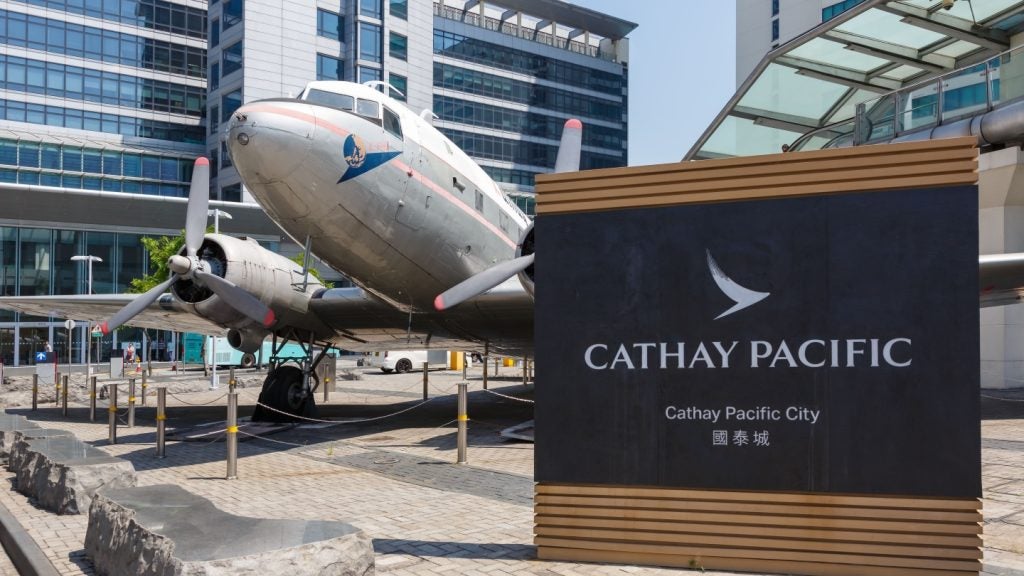
Covid-19 accelerated digital transformation and Cloud adoption across most industries, including travel and tourism, in which the Covid-19 pandemic enhanced the digital passenger journey, with contactless touchpoints enabled by Cloud computing. Cloud investment by travel and leisure companies will reach $18 billion in 2026, up from $8.6 billion in 2021, according to GlobalData.
SITA is a global air transport communications and IT company that delivers solutions for airlines, airports, aircraft, and governments. Speaking to GlobalData, Martin Smillie, senior vice-president for communications and data exchange, and David Kershaw, Portfolio Director, explain how SITA helped meet a plethora of business needs, from operational benefits and cost savings to biometrics and seamless digitalised customer journeys.
Covid-19 caused industry upheaval but created IT opportunities
Covid-19 affected all businesses, but the travel industry was more impacted than most. Post-pandemic, travel companies have had to streamline operations and optimise costs. According to Smillie, “On the airline side, what we see post-pandemic is companies starting to think about their operating environment and looking to optimise cost more efficiently and effectively because of the financial strain being placed on the air transport industry.”
“This is being felt across the travel industry,” said Kershaw: “Airports, airlines, and ground handling operations are all trying to explore doing more with less. They are looking for things that might drive down costs and drive efficiencies.”
This has led to an increase in Cloud adoption and exploration. Smillie explained: “They’ve got their own current private legacy environment, but they’re certainly looking to optimise the cost environment by moving to the cloud.” For SITA, this meant supporting cloud migration with its networking services.
See Also:
The importance of being architecture-agnostic
While Covid-19 has sparked more interest in the Cloud, operational architectures vary across airports, airlines, and baggage handlers, depending on company size, spend, and privacy priorities. Smillie said SITA has “a hybrid approach; we’re not set on one technology and on one architecture,” supporting private Cloud environments, on-premise environments, and the public Cloud. Smillie continued, “We have a legacy which comes from our own private Cloud environments and on-premise, and we have services and relationships with public Cloud vendors like Microsoft Azure and AWS for airport-orientated services.”
How well do you really know your competitors?
Access the most comprehensive Company Profiles on the market, powered by GlobalData. Save hours of research. Gain competitive edge.

Thank you!
Your download email will arrive shortly
Not ready to buy yet? Download a free sample
We are confident about the unique quality of our Company Profiles. However, we want you to make the most beneficial decision for your business, so we offer a free sample that you can download by submitting the below form
By GlobalDataThis strategy allows SITA to provide products for businesses, regardless of their operating model. Kershaw added, “Our platforms have been designed to move at the pace of our customers. There are some that are at the cutting edge and want everything off the airport and some want everything on-premises. That’s driven by culture and attitude to risk, but also the legal regulatory environment, so we cater across the spectrum.”
SITA launched a software defined networking (SDN) service called SITA ConnectGo in October 2022 to support customers’ digital transformation, regardless of the operating environment. Smillie told GlobalData, “With this sort of service, we can cope with customers who want a mixed environment, a hybrid environment, and a Cloud environment. You’ve got people at both ends of the spectrum and a bunch in the middle and we need to optimise for everyone.” SITA ConnectGo allows airports to connect quickly to applications and systems wherever they are hosted, setting up connections using SITA shared connectivity platform, AirportHub platform, which is available in 700 airports globally. According to Smillie, SITA Connect Go runs on its AirportHub platform, which allows customers to quickly connect to a single environment through a shared service, reducing cost and avoiding managing third-party network providers
SITA is adding to this, overlaying it with an API-specific SDN service, allowing customers to manage their own applications over the top of the network. “Customers will be able to see how their applications are performing, optimise their bandwidth, and take data on the performance of those applications out of SITA’s infrastructure,” said Smillie.
Supporting the emergence of a seamless future
Covid-19 necessitated the creation of new Cloud operating environments and applications for streamlining operations and improving the customer experience. SITA provides solutions to allow airports to digitalise and create smooth customer journeys. For example, Smart Path, a whole-journey identity management solution, identifies passengers from check-in to board by scanning their faces at touchpoints. Airports and airlines can then deploy SITA Flex, a new, common-use platform that uses the Cloud. This allows services, such as check-in or baggage pick-up, to be deployed anywhere. Seamless travel experiences with multiple touchpoints and personalised features are going to be an important investment area for travel and tourism companies. Eventually, Cloud computing technologies will enable a seamless experience across the traveller’s journey, inside and outside the airport.









Related Company Profiles
SITA NV